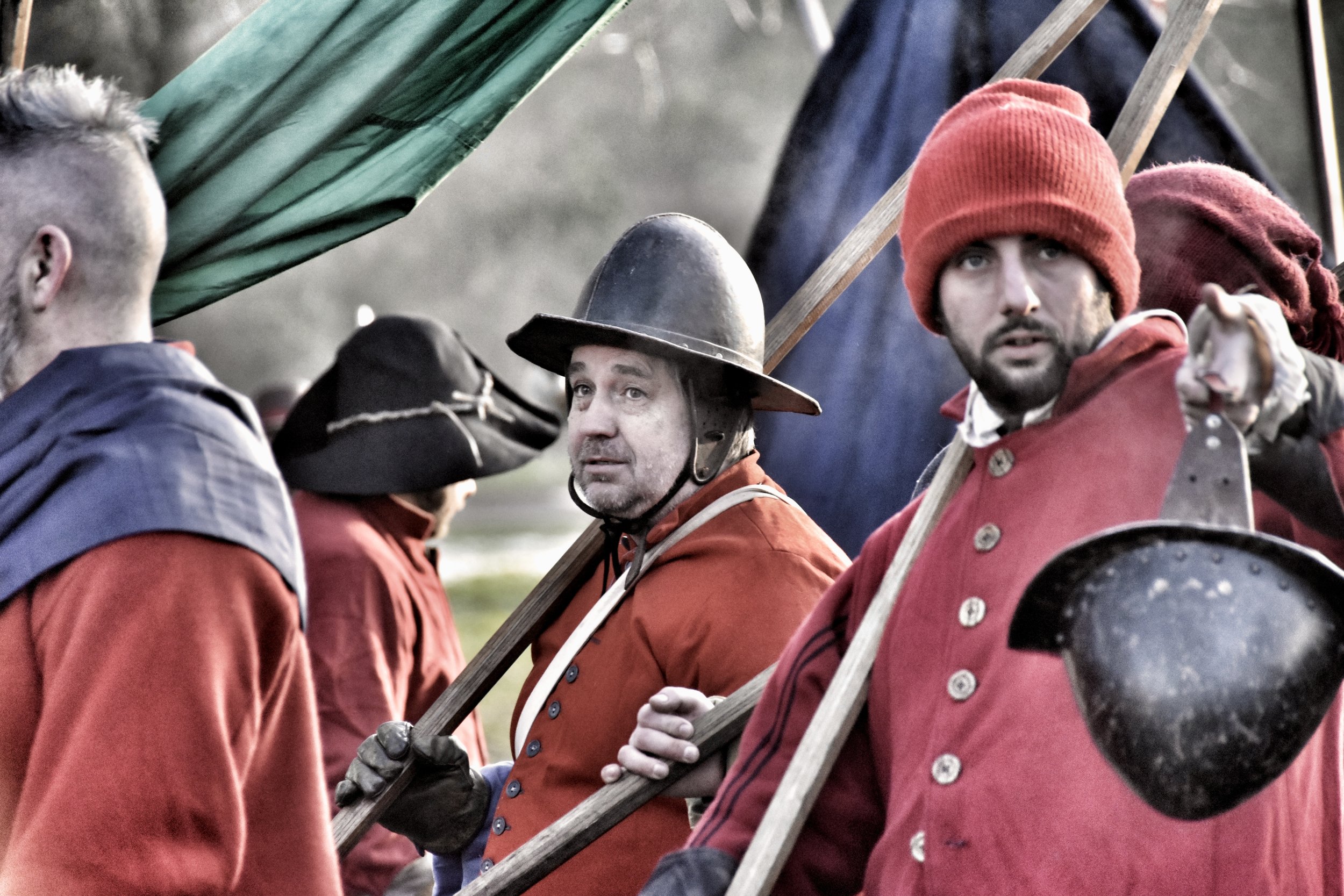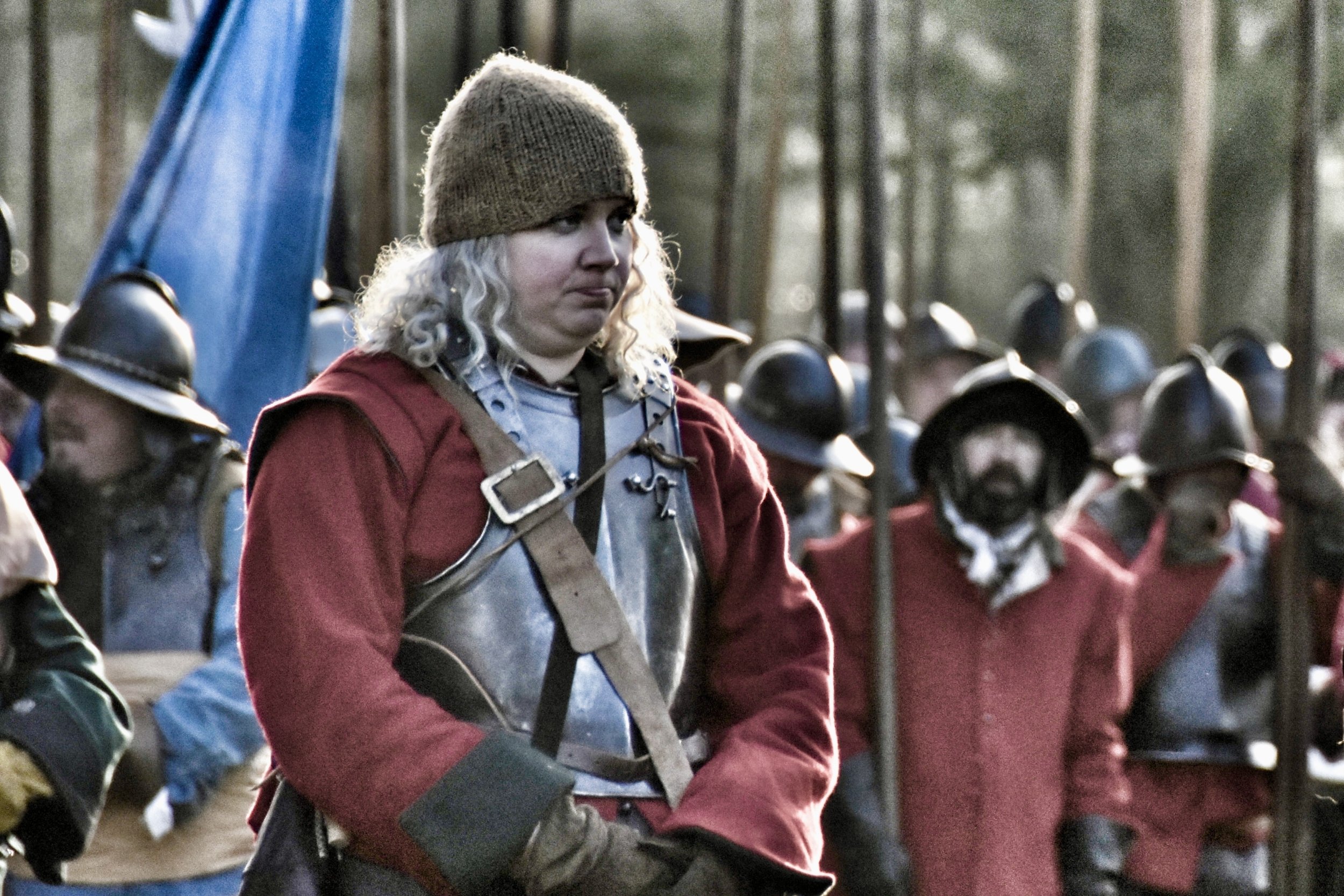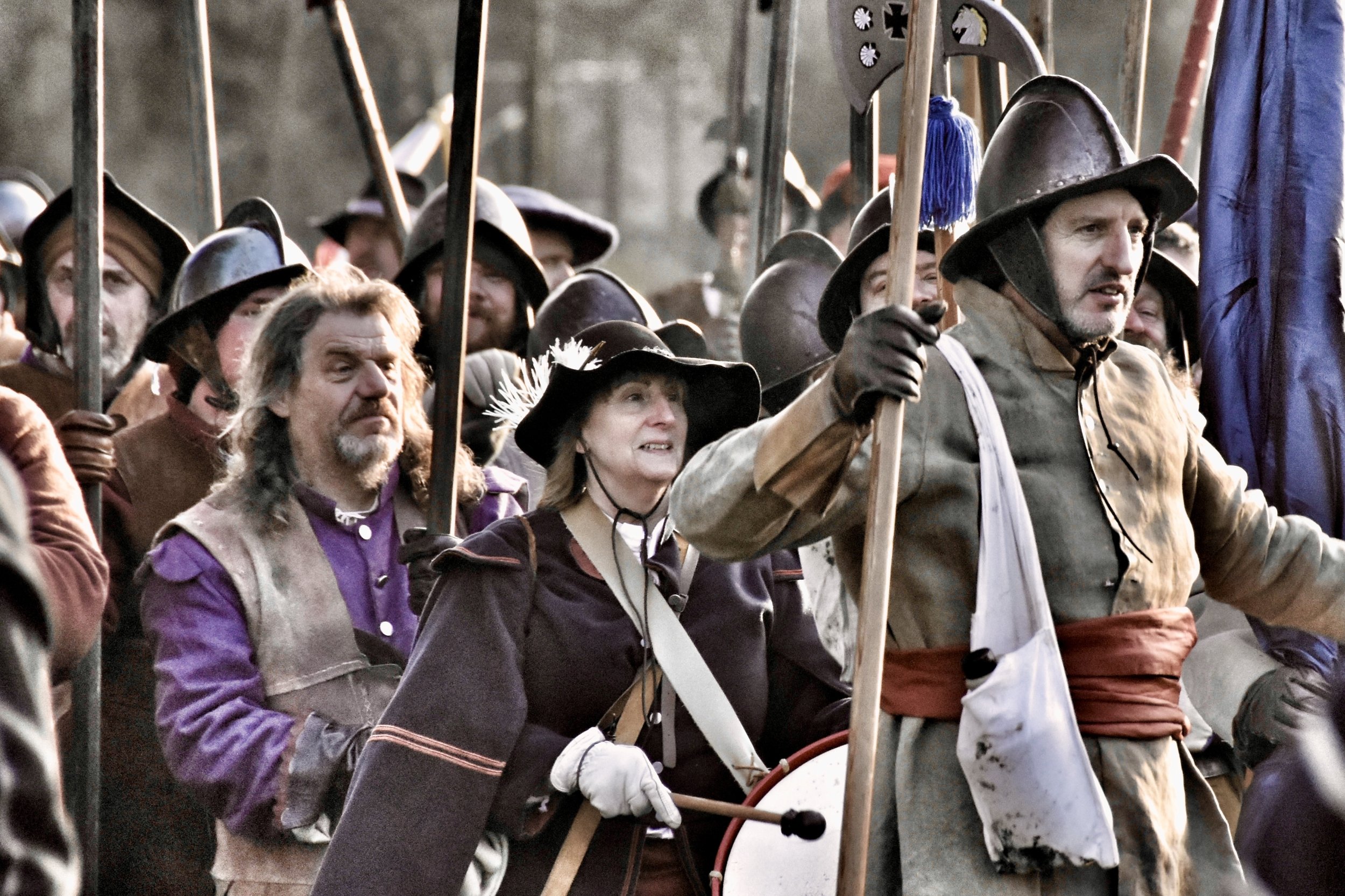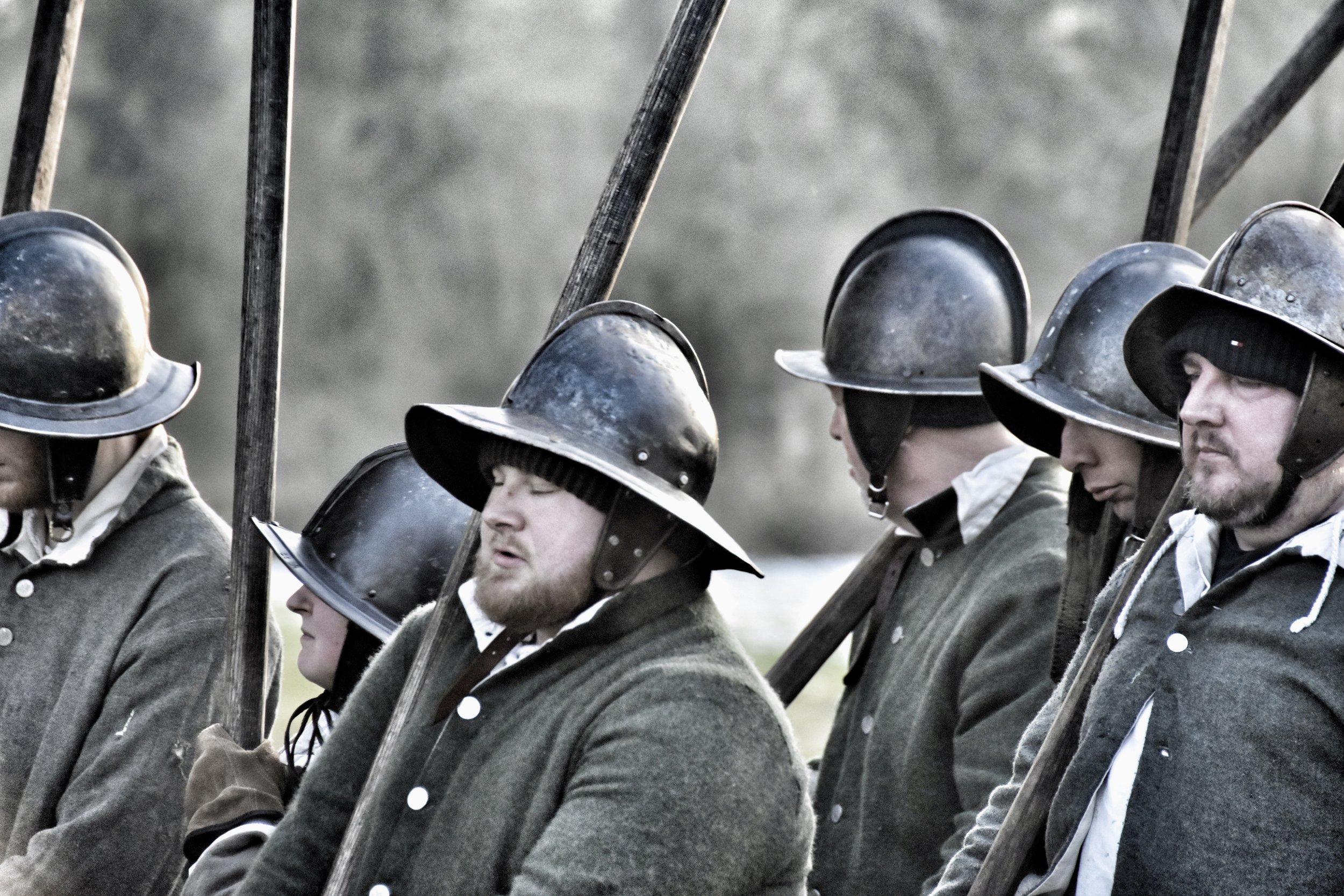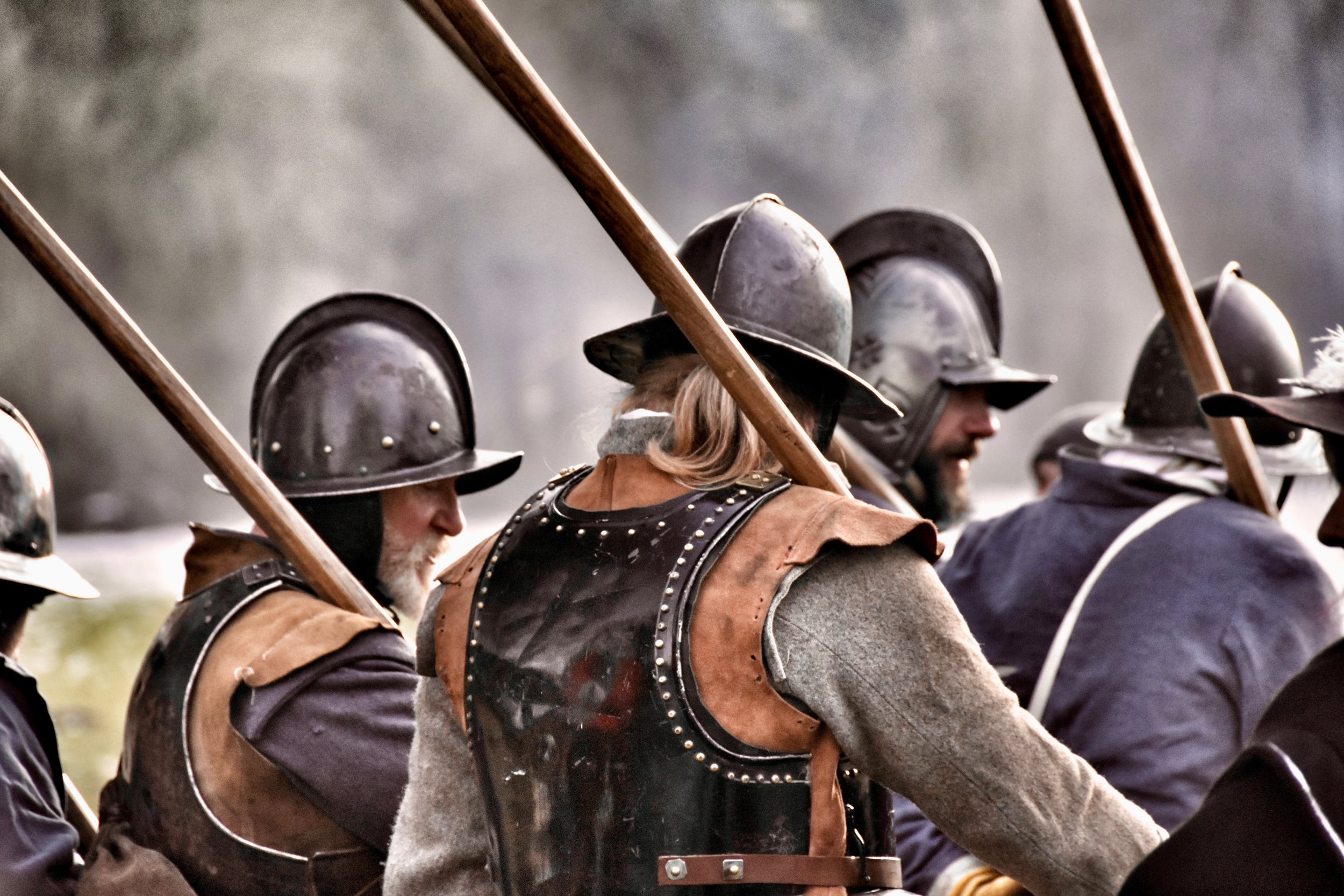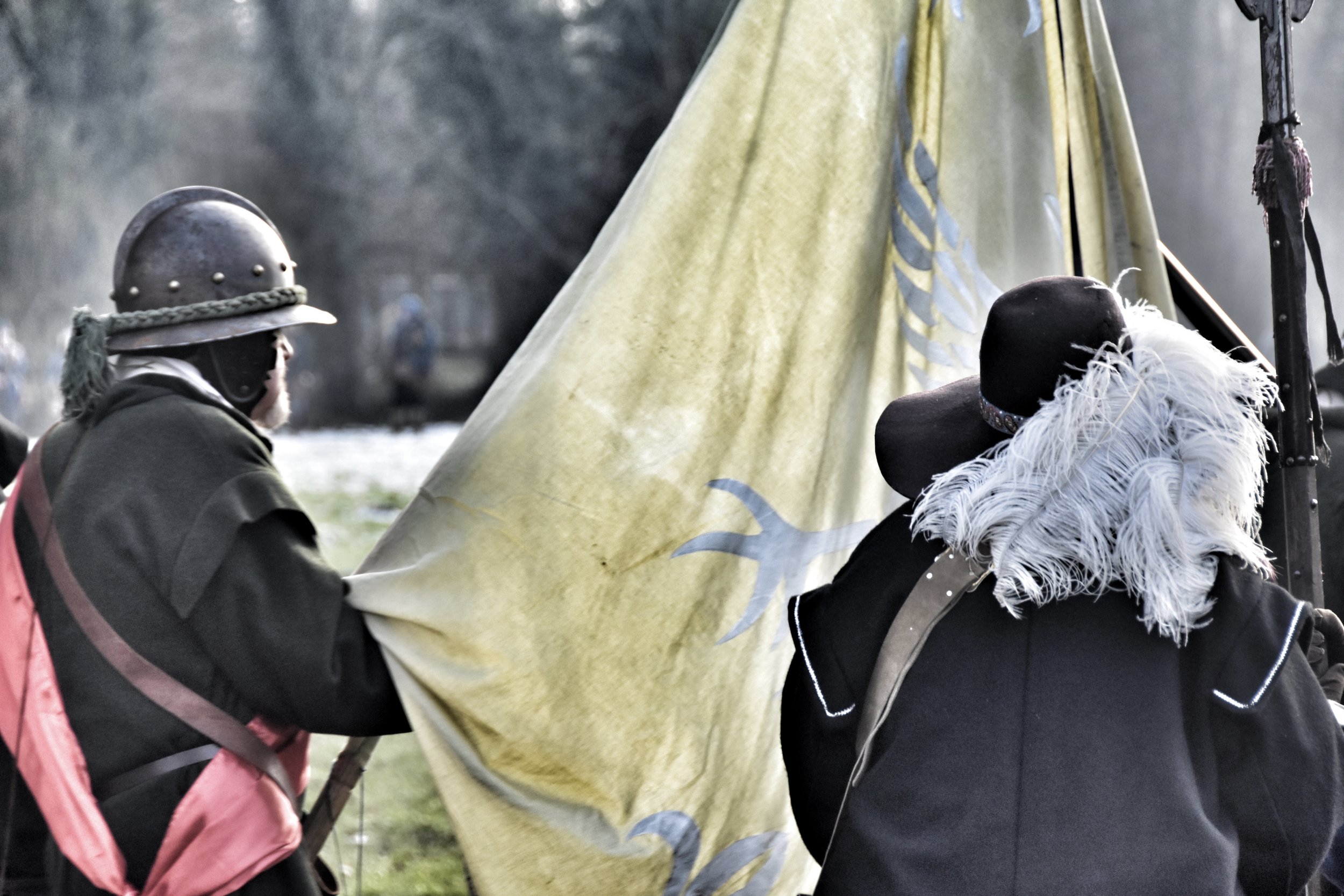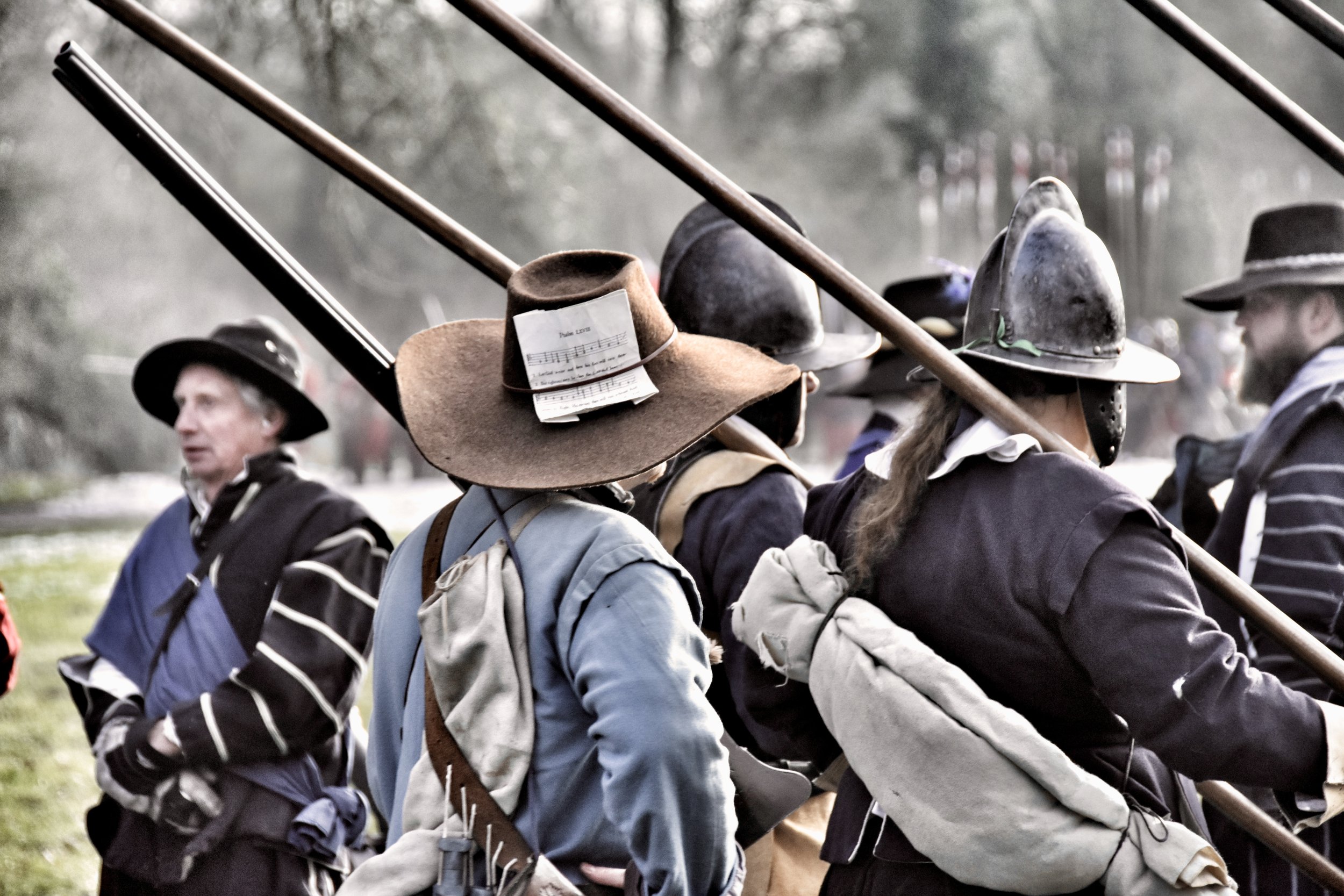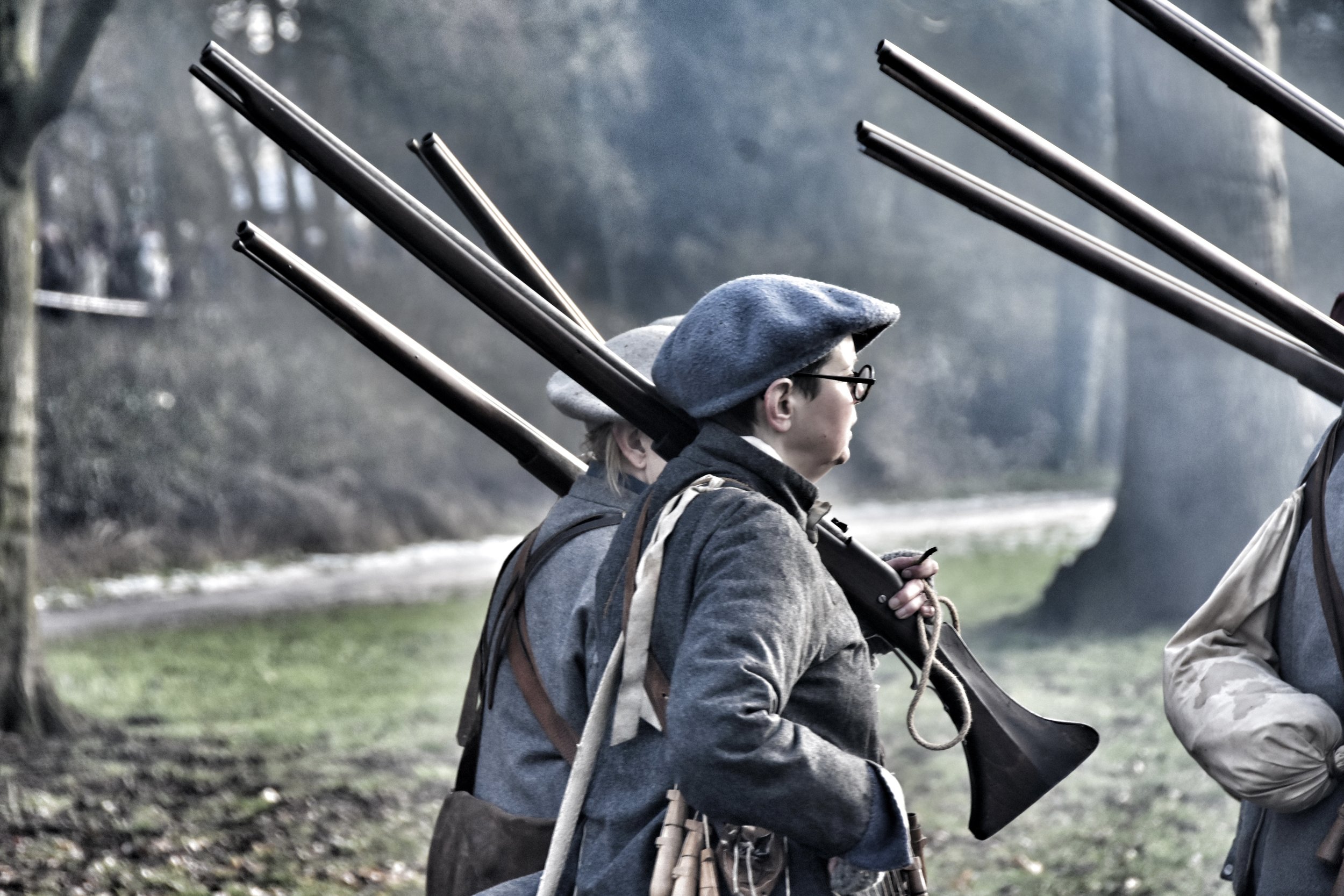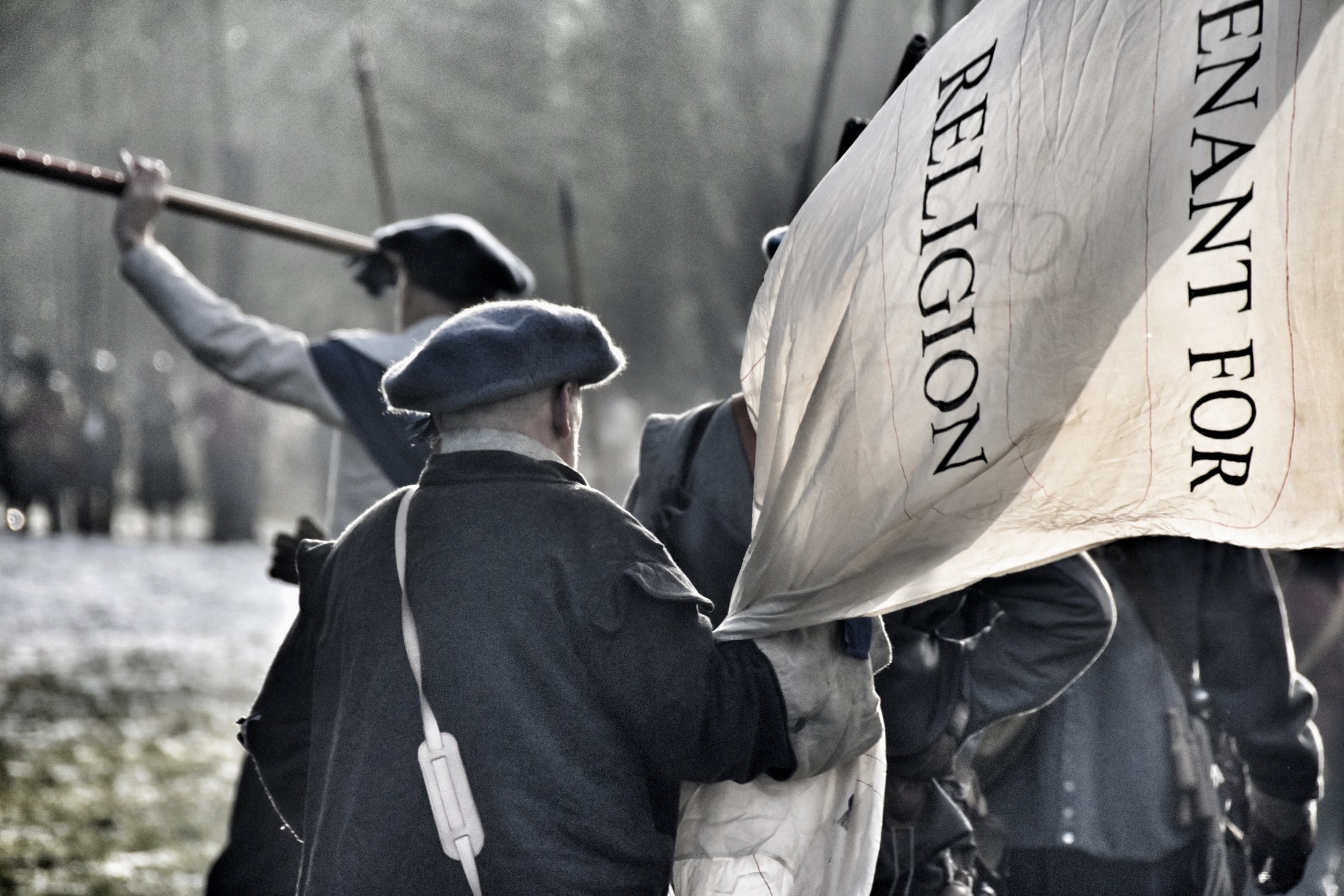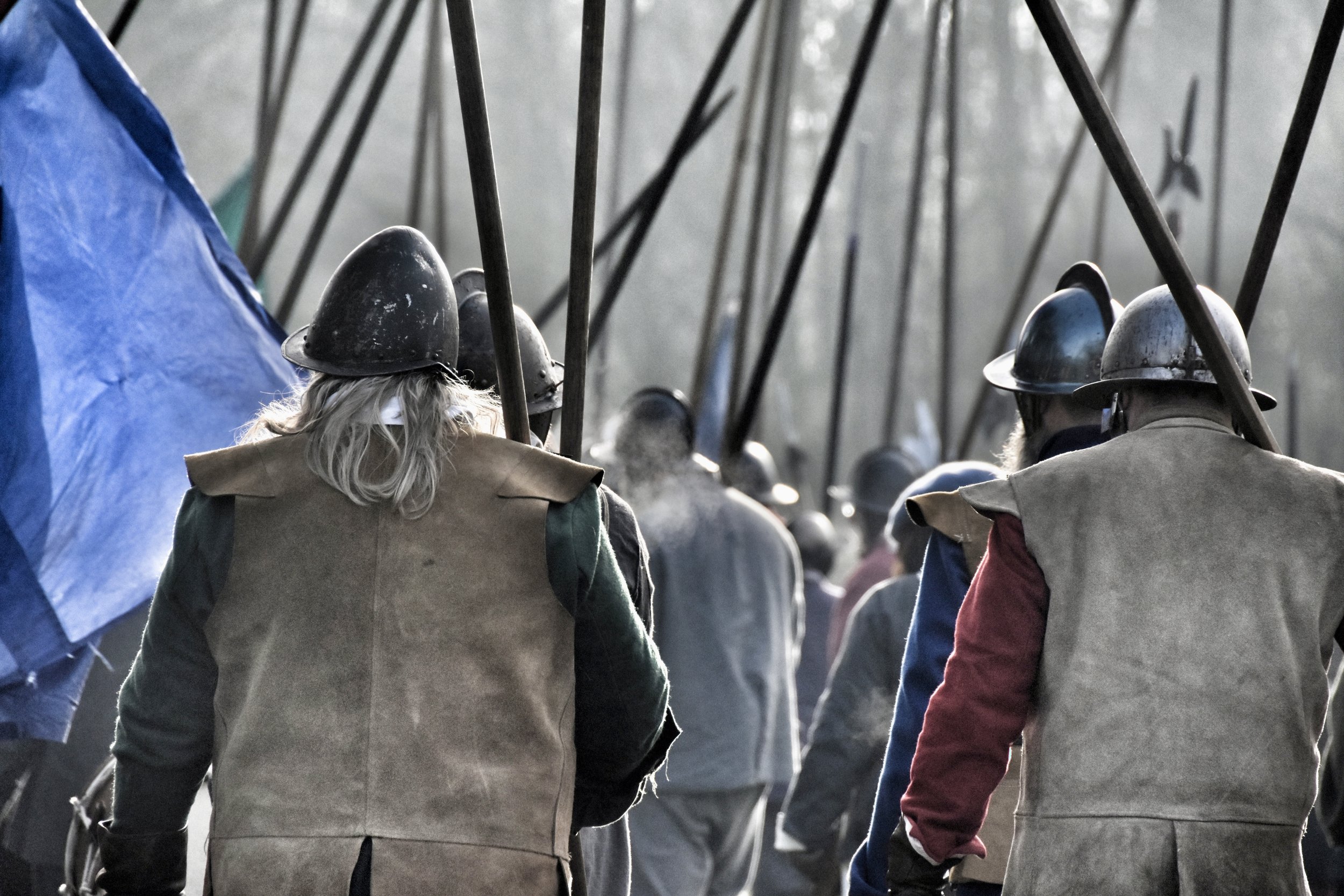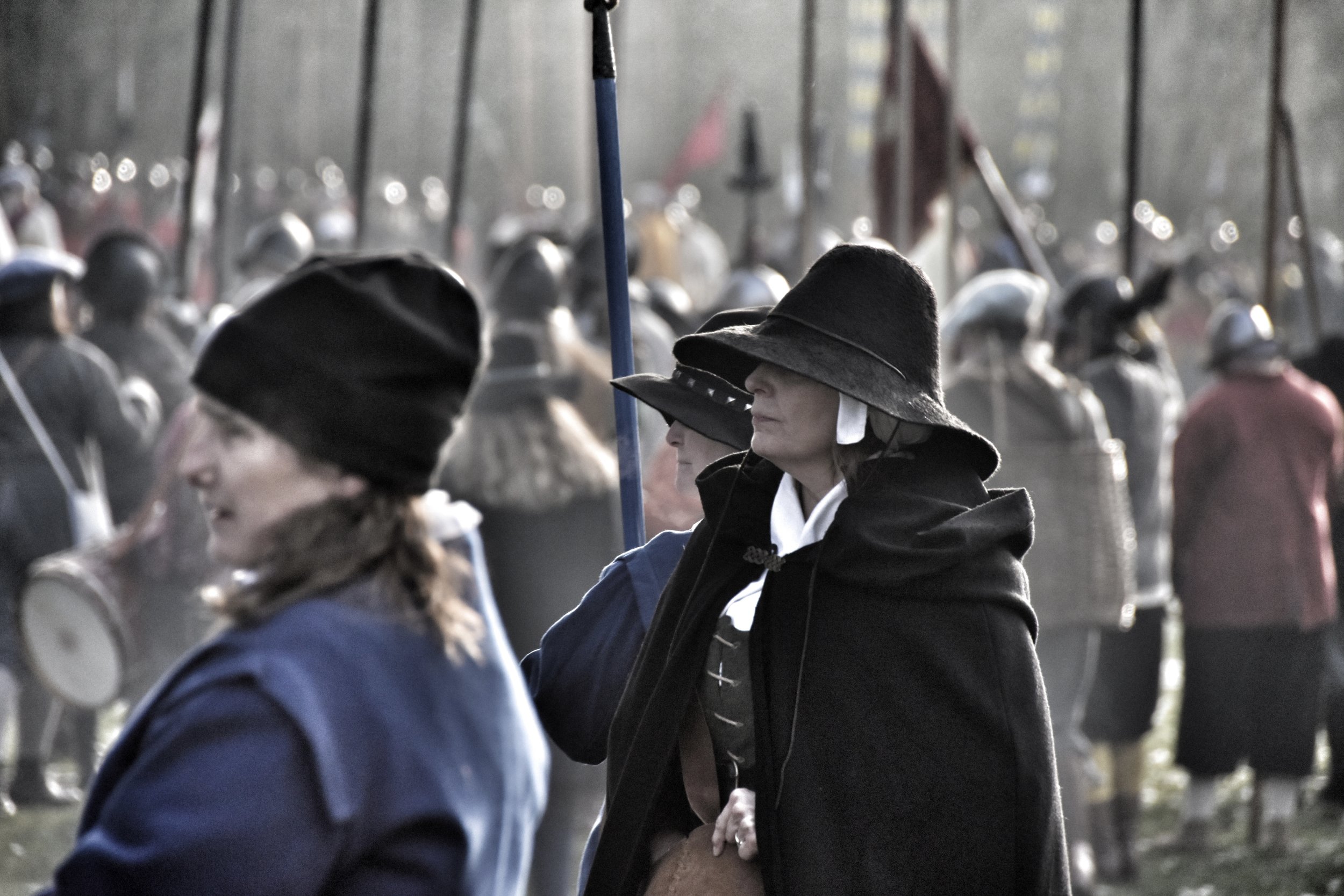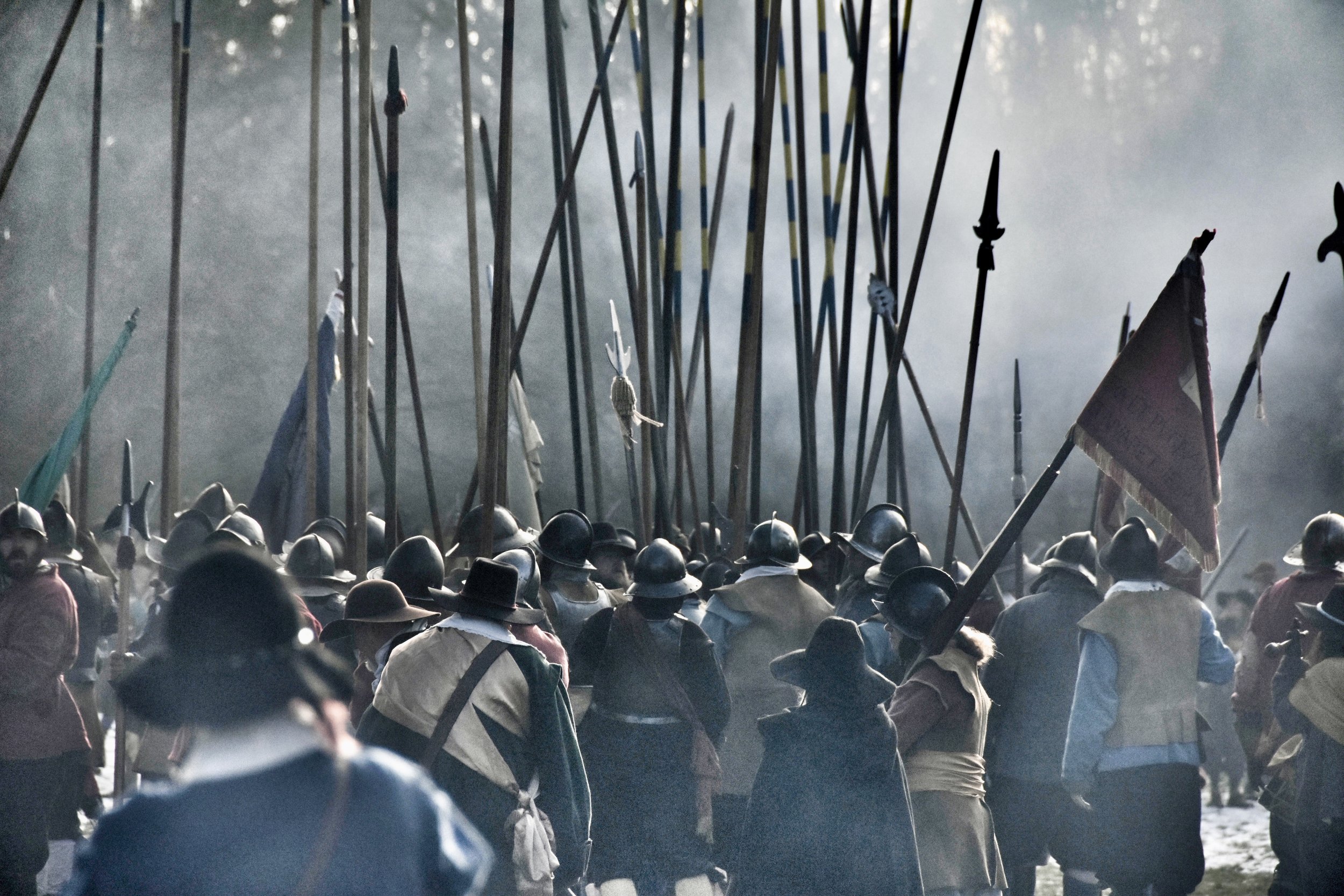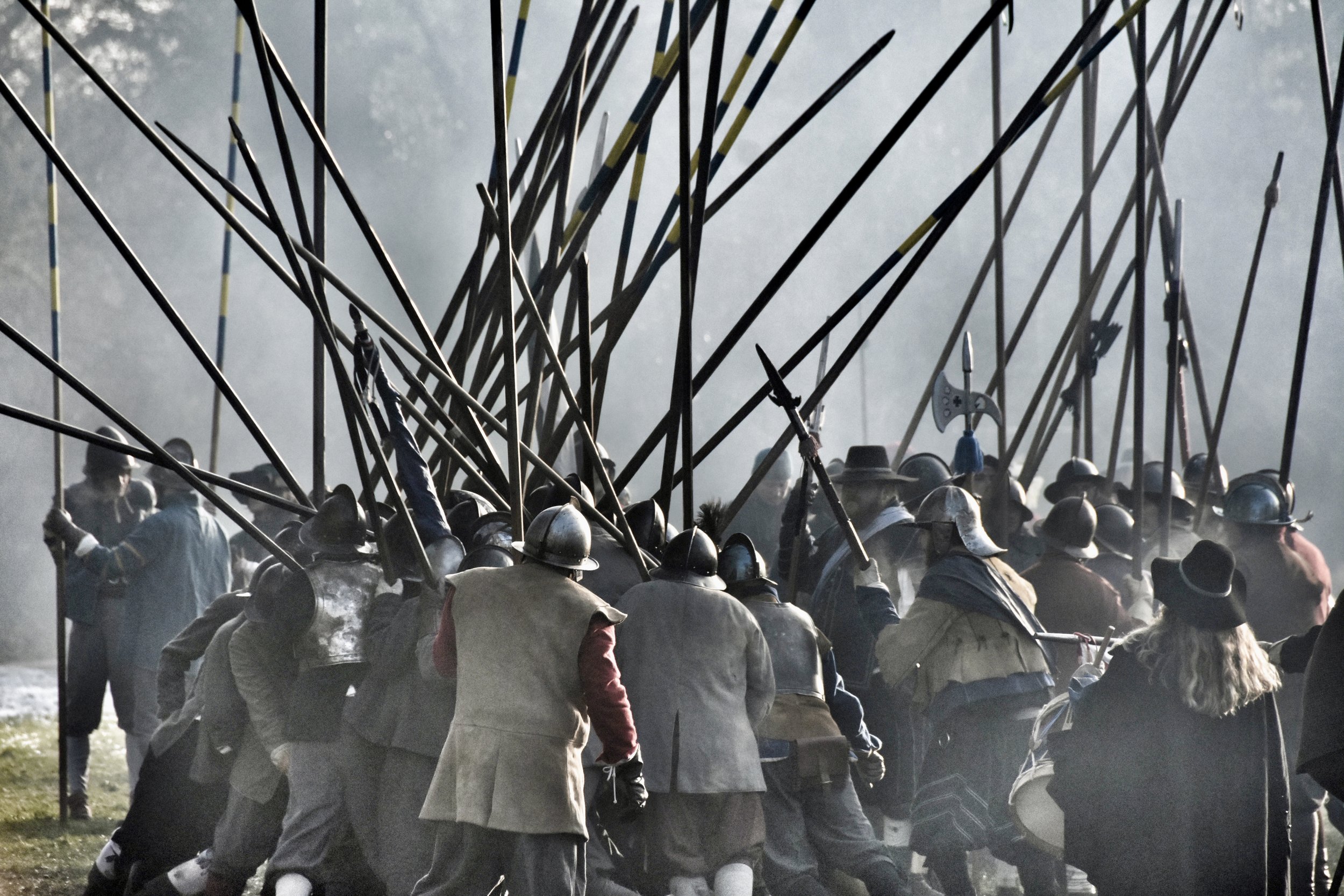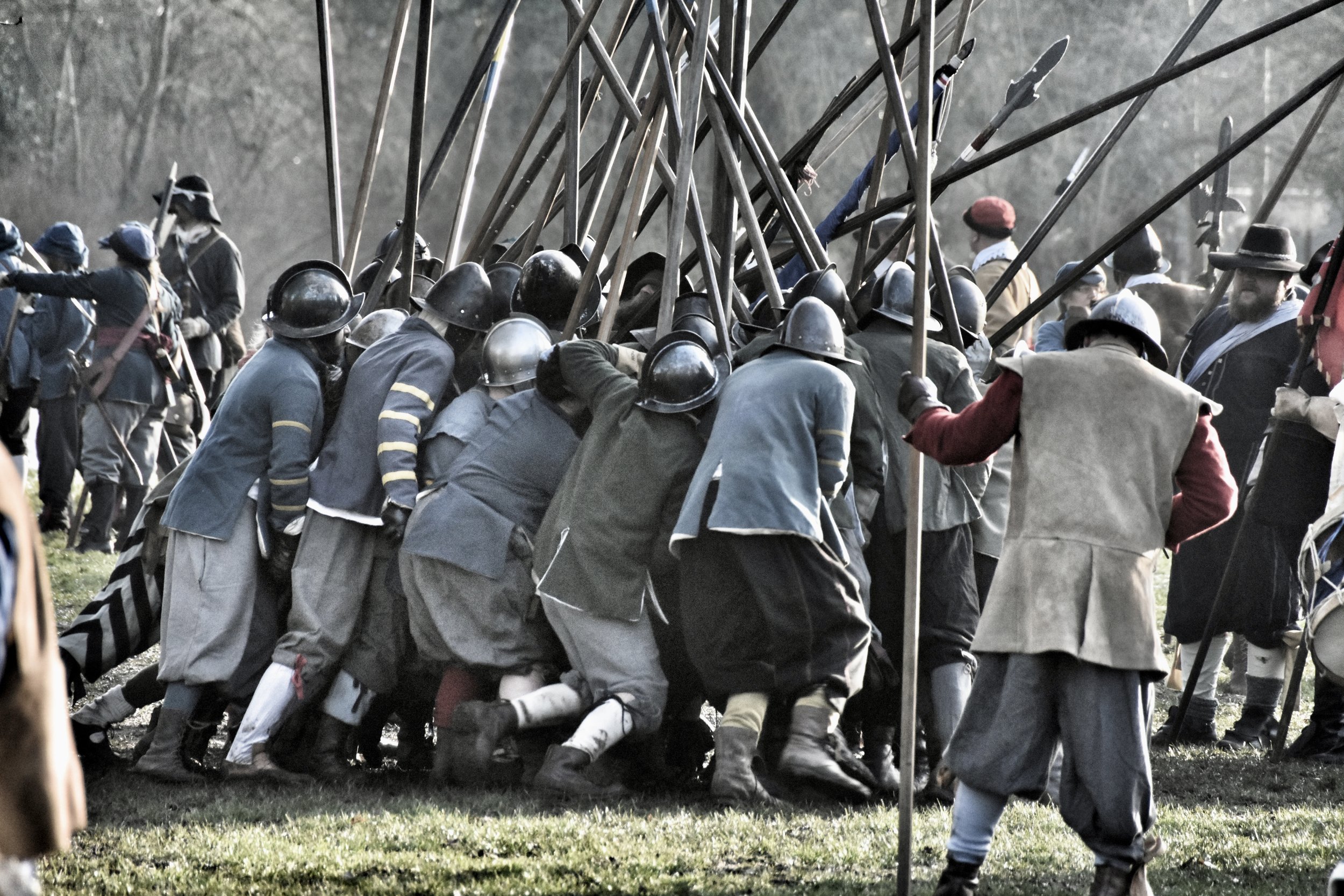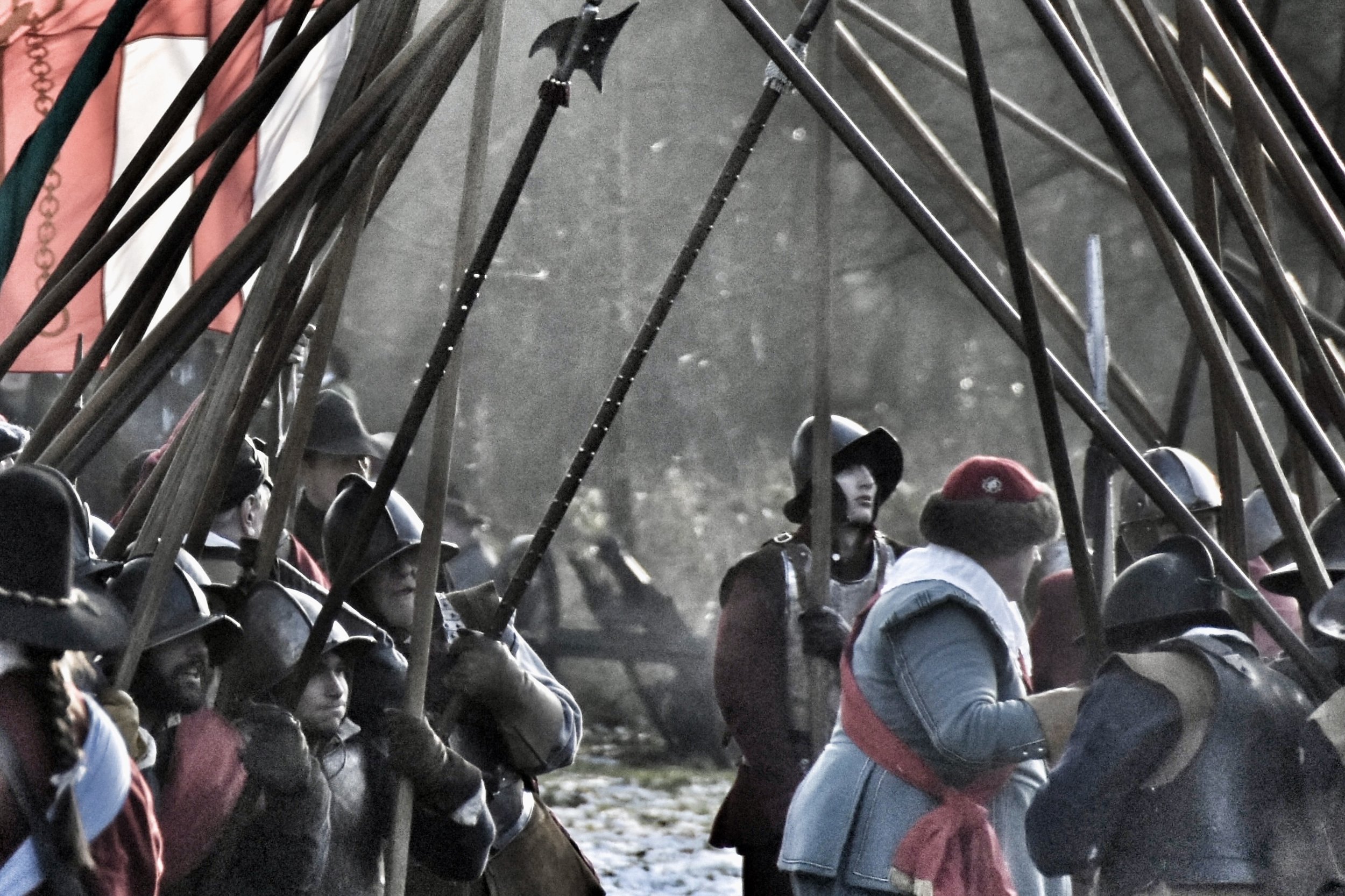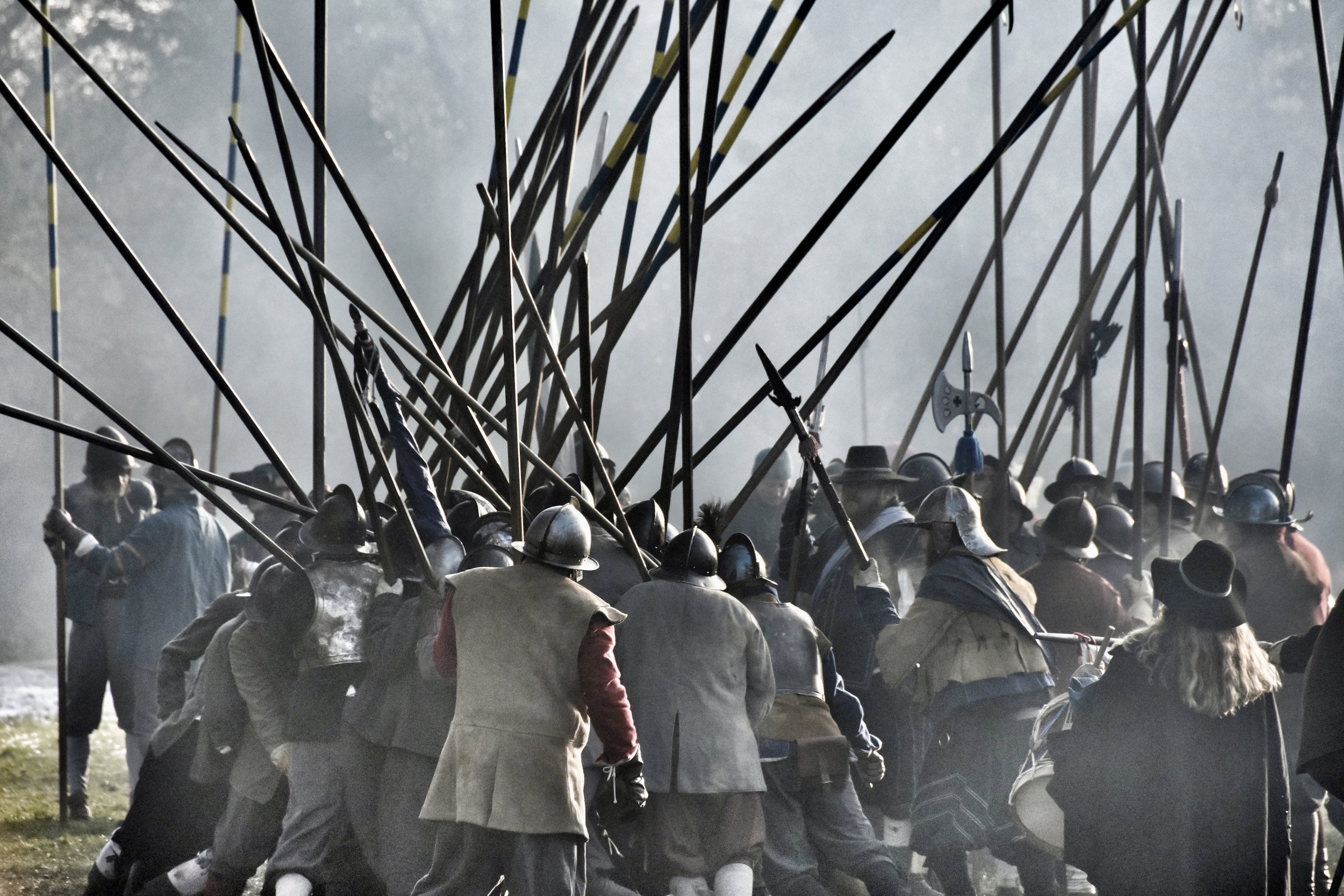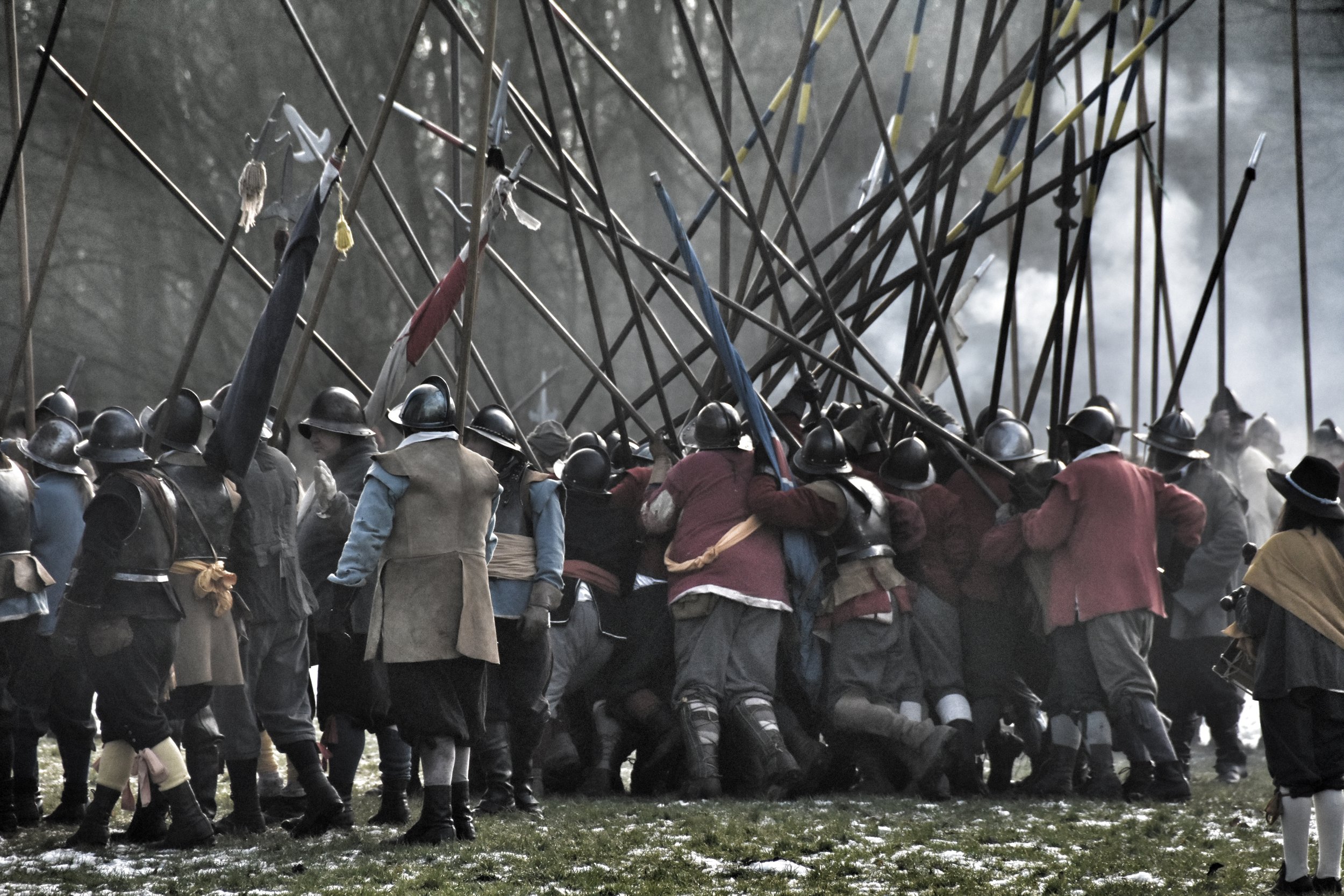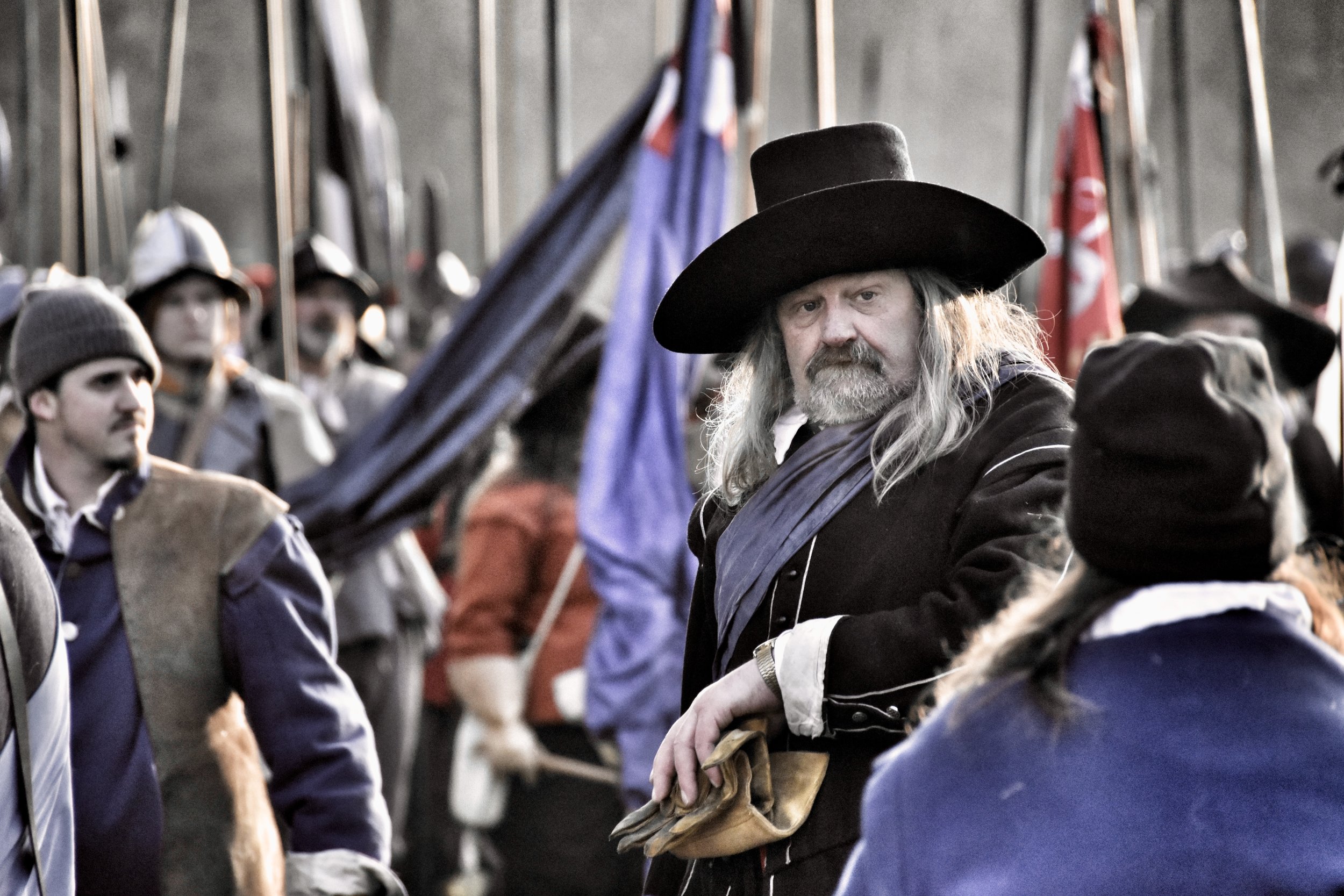Musket, Fife and Drum:
by Keef Charles
The Battle of Nantwich
“It’s freezing, they’re going to get so cold,” said the young woman next to me. To which her friend replied: “Well it’s their own fault for doing it this time of year”. What?! We were part of a crowd of thousands who’d come to see a reenactment of a battle from the English Civil War, on Mill Island in the Cheshire town of Nantwich, and maybe she should realise that it was history, not the clemency of weather that dictated when it should be held. Anyway, seeing as how I’d be stood next to them for the next hour or so, I kept my thoughts to myself.
I was lucky, I’d arrived early enough to grab a place at the front but I didn’t like the look of the second safety barrier that was sited five meters in front of me, it impeded my view of the canon crews in the foreground. Both canons were fired several times ahead of the battle and wow, they were deafening. It was, however, the beating of the drums and the sweet blowing of the fifes (similar to a piccolo) that really got me as it heralded the arrival of the troops. I realised, as the procession passed before me, that there was plenty of passion and character evident and that this was going to be a real spectacle. The barriers proved not to be a major issue, except that when it came to the action itself I was desperate to dodge between them and get right amongst the battling players. I wanted to be amidst the action! I envisaged being on my knees for one POV, lain on the ground for another, moving stealthily between the warring factions. Mentally I was straining at the leash but yearn as I might, it was here I had to remain, feet rooted to icy ground, making best use of my 300mm of zoom. As a result the clarity of the images isn’t razor sharp but that’s ok, painterly is good. I wanted to create a story, capture mood, emotion and expression with a street photographer’s eye, give people a feel for what it was like here.
The Battle of Nantwich was fought on 25 January 1644 in Cheshire during the First English Civil War. In the battle, Sir Thomas Fairfax in command of a Parliamentarian relief force defeated Lord Byron and the Royalists. The armies on display were part of the Sealed Knot, which is the oldest reenactment society in the UK, and the single biggest reenactment society in Europe. No wonder then, that they had a guy who entertained (and educated) people before, during and after the event.
He was amusing, anecdotal, explaining why the field of battle wasn’t going to be littered with ‘dead’ bodies. You need to consider, he told us, that the people involved in these reenactments train for months, get up at 5AM to be here and (at this time of year) the ground is ‘colder than a witch’s tit’ (my use of the old saying, not his), so they don’t want to stop playing after just five minutes, they’ve come to enjoy themselves.
The drums aren’t just a call to arms of local townsfolk, the announcer also clarified, each series of drumbeats sends a message, to advance, engage or retreat. Furthermore, way back in the 17th century, women wouldn’t have been allowed upon battle field, not even as fifer or drummer but thankfully times have changed. Thus, despite the fact that it relates to another episode of British history, I couldn’t resist using the song by the folk group Steeleye Span to accompany this article.
Something else I’d accepted but found interesting, was that the skirmishes between the pike bearers whilst very physical, were more like a glorified rugby scrum. For the simple truth is, that as much as these guys love their battling, they wouldn’t want the pikes to be borne in the usual manner, aimed at their faces! That would be unlucky.
Unluckier still were the exploits that day of three brothers. The ensign, besides being the term for a certain British maritime flag, was also the name given to the lowest ranking officer. It was his duty to carry the flag and it was a real point of honour to retain these ‘colours’ throughout the battle. On this occasion, one brother was killed, so another rushed to take up the flag and he too was killed. Into the fray ran the third, but alas that poor family lost all three sons that day, in vain attempt to save the regiment’s pride.
So the proceedings drew to a close.
The muskets made a din, the canon blasts were loud, such that people were advised beforehand to protect their ears from the sonic waves, but that aside, the field was relatively quiet. Some yelling of orders could be heard, some huffing and puffing as the combatants made physical match but it was a reenactment, there were no shrieks or groans of wounded men, no cries of souls leaving this mortal coil. As the tired, sometimes haggard looking participants left the arena, the smell of sulphur still hanging in the air, gunpowder burns on shoulders and sleeves of the musket corps, sheafs of light glinting off the battered helmets of pike bearers, jerkins ragged and torn, I was moved.
This was history come alive.
